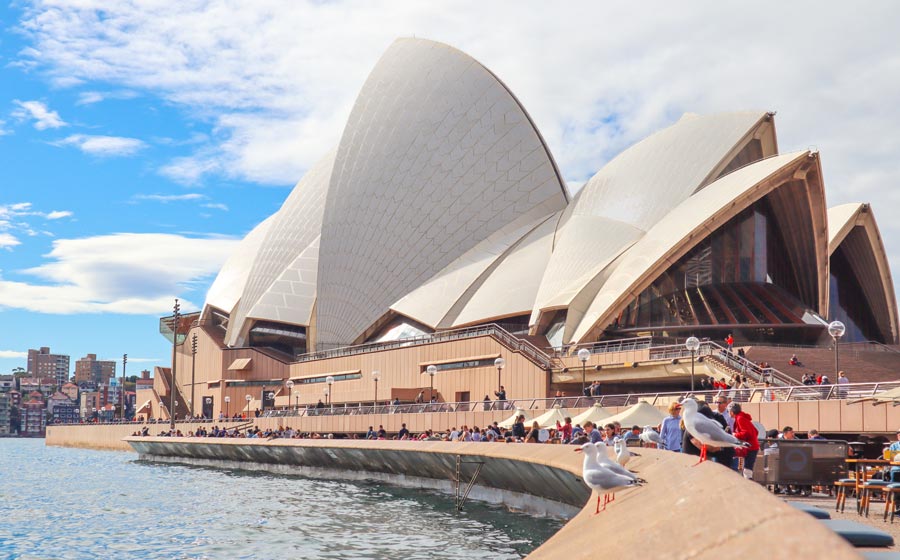- Opening Time : 8:30 AM - 9:30 PM

Canada is a country located in the continent of North America. It consists of 10 provinces and three territories. The largest province is Ontario which is about 99% populated by people in Canada. The primary official language is English, although French and aboriginal languages are also widely spoken by the people living there. This article will briefly introduce Canada, including its geography and history, along with some of the most popular tourist destinations among its well-known cities, such as Calgary and Vancouver, as well as it’s capital city Ottawa.

Canada is the home of some of the world’s top research facilities and academic institutions. Imagine learning in supportive academic environments where professors are approachable, and classrooms reflect the cultural diversity of the land. Imagine entering the workforce with qualifications that are recognized and respected the world over.
This is what it means to study in Canada! Start your education in Canada with valuable information on everything you need to know about studying abroad in Canada, from study permits and temporary resident visas and how much it costs to find a program and what student life in Canada is all about!
Admission requirements vary from one institution to another, but common prerequisites are :
Minimum 12th grade for undergraduate study in a university Community colleges and Technical Institutes are more flexible).
Minimum 550 in your TOEFL score (paper-based test)/213 (computer-based test).
A Master’s degree requires 16 years of education (10+2+4).
Work experience and a GMAT score of 600 range for MBA Programmes.
There is no Canada-wide entrance test; each university sets its admission standards and assesses the qualifications of each applicant individually
Canada has many climatic variations, ranging from the permanently frozen ice caps north of the 70th parallel to the lush vegetation of British Columbia’s west coast. However, Canada has four distinct seasons, particularly in the more populated regions along the US border. Daytime summer temperatures can rise to 35°C and higher, while lows of -15°C are not uncommon in winter.
More moderate temperatures are the norm in spring and fall. Over the years, Canadians have adapted exceptionally well to the colder periods of weather by installing heat in housing and cars and by having heated public transportation systems.
Numerous studies have found that Canada is among the finest places to live. Canada was named the world’s third-best nation by US News & World Report in 2018 and 2019. Canada’s high life expectancy (thanks mainly to its universal health care system) and relatively low crime and violent crime rates are major contributing factors. More and more students from other countries choose Canada as their study-abroad destination.
Roughly 36.7% of the world’s population lives in Canada. Most Canadians trace their ancestry to Europeans, including settlers from the original British and French colonies and later arrivals from Eastern and Southern Europe. There was a large influx of people from Asia, the Caribbean, and Africa in the latter half of the twentieth century. Canada is home to people of more than 260 distinct racial and cultural backgrounds. First Nations, Inuit, and Métis comprise a sizable indigenous population.
Geographically, culturally, and climatically, Canada is a big country with many unique features. This means that the Canadian way of life will be different for everyone. The religious landscape of Canada is diverse, with more than 20% of the population identifying as religiously unaffiliated. Canadians are united by core beliefs and ideals that include a healthy respect for variety, openness to new experiences, and a healthy dose of national pride. Canada’s reputation as a welcoming, peaceful, and safe country stems from its residents’ adherence to these ideals.
Canada, the world’s second-largest country, lies in the northern half of the North American continent. It’s a big country, but most people reside within a few hundred kilometers of the southern border. The Torngat Mountains, Appalachian Mountains, and Rocky Mountains are just a few mountain ranges in Canada. The St. Lawrence River is the longest and most significant river in Canada at 3,058 kilometers, serving as a seaway for ships traveling between the Great Lakes and the Atlantic Ocean.
Environment The climate in Canada is as diverse as the country’s population. Even though the country’s northern half is home to particularly harsh arctic weather, it is devoid of human habitation. The southern border regions of Canada with the United States are the most populous and experience all four seasons. Summers can get very hot, even though winters tend to be longer across the country. Some locations receive considerable snowfall, and others receive mild rain.
The Great Lakes acted as a buffer, reducing the severity of winters in the southern United States. The southern summer is more extended but muggier, with temperatures averaging around 20 degrees Celsius from mid-June to mid-September. Temperatures of 25 degrees Celsius are typical in the winter. Temperatures are often more agreeable in the spring and fall.
University, institution of higher education, usually comprising a college of liberal arts and sciences and graduate and professionals. The short story shut a final door and other tales of loveless.
| SL | Name of Universities | Ranking |
|---|---|---|
| 01 | University of Toronto | 01 |
| 02 | The University of Britsh Columbia | 02 |
| 03 | University Of Alberta | 03 |
| 04 | Conestoga College | 04 |
| 05 | Mcgill University | 05 |
| 06 | Memorial University Of Newfoundland | 06 |
| 07 | York University | 07 |
| 08 | University of Calgary | 08 |
| 09 | Humber College | 09 |
| 10 | Mcmaster University | 10 |